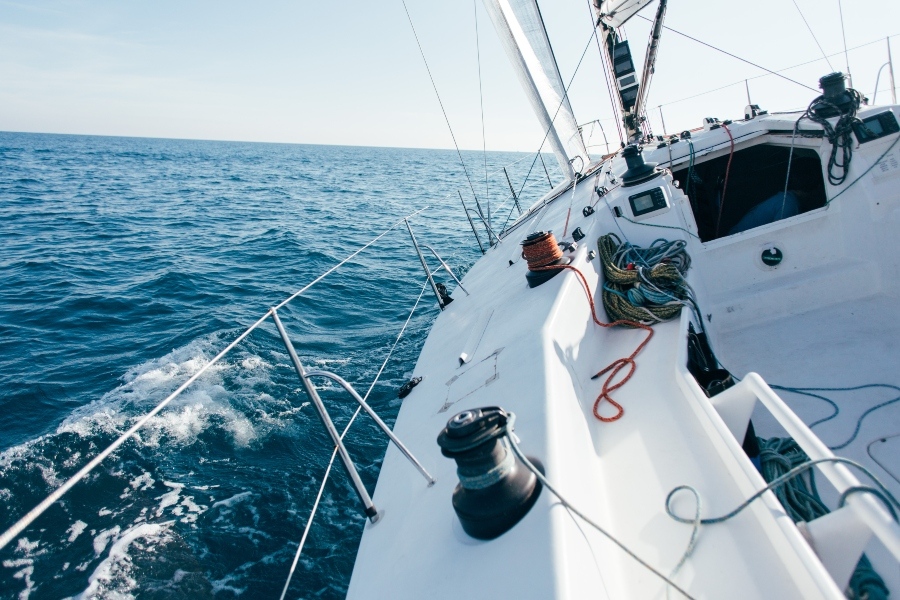How to prevent Electromagnetic Interference for marine vessels ?

Radio communication systems, navigation radars, satellite communication systems... On board , there is a concentration of electronic products in a very close area. In order for all this equipment to operate together, it is imperative to ensure the proper electromagnetic compatibility (EMC) of each one. If the original equipment is well EMC certified, during the operating time of a commercial vessel modifications can be made and then modify original installation, creating new electromagnetic interferences... To avoid being unable to operate, it is recommended to be very careful to the respect of the EMC standards of each equipment, taking into account the location where the device will be installed.
Commercial Marine : EMC standards to make sure all equipment can operate together
Electromagnetic compatibility (EMC) addresses two concerns. First, the ability of a device to limit its radio frequency emissions so it doesn’t interfere with other nearby devices (for example radio receivers) and second, the ability of a device to operate as required in the presence of electrical and electromagnetic interference and other electrical hazards.
Containers, LNG tankers, cruise ships... In the marine commercial industry, all ships must be certified by certification bodies. This means that each small piece of equipment on board must be certified by third party organizations, in accordance with the regulations applicable to electrical and electronic equipment, and after compiling a complex technical and administrative file. This includes compliance with the rules on electro-magnetic compatibility (EMC). Depending on whether the equipment is located in the engine room or on the deck, the EMC levels to be respected will not be the same, quickly making the EMC issue a headache.
Indeed, not all equipment need to comply with the same EMC standards. The level of requirement will be more or less high depending on the environment of use and the place in the boat where they are intended to be installed.
For example, some electronic equipment can be DNVGL certified, but only for installation in the technical rooms and not in the wheelhouse where sensitive navigation electronics are located. In the wheelhouse, the EMC constraints are indeed more demanding: the devices must be extremely quiet from an EMC point of view in order not to disturb the radar, for example.
EMC and commercial marine : what are the risks of non EMC compliance ?
In theory, all boats must be CE certified. In practice, modifications can be made to the original equipment. The installation of non-compliant products can cause serious EMI problems. Since there is no EMC review during the life of a boat, accidents can occur due to electromagnetic interference.
Remember when LED light bulbs first came along? Working boats were fond of floodlights for night work and saw LED light bulbs as a way to reduce costs. Many fishing vessels replaced incandescent bulbs with LEDs to reduce their energy consumption. However, a few months later, accidents occurred because it turned out that these LED bulbs were of poor quality from an EMC point of view and interfered with the navigation equipment, especially with the VHF channels. This example is a reminder of how crucial EMC is for ship safety.
Commercial Marine Electronics: The best practices to avoid EMC interferences
Compliance with EMC increases the cost price of products. To ensure that electronic equipment does not emit too much electromagnetic interference and is not too sensitive to external disturbances, it is indeed necessary to add protection systems such as ferrite bead. In itself, these systems do not add anything to the function of the product. On the other hand, they guarantee its proper operation in the environment in which it will evolve.
Faced with this pitfall and with a view to reducing costs, some manufacturers may choose to do the bare minimum in terms of EMC. This would be a mistake.
To avoid any problem during use, we advise you to :
- Check the EMC specifications given by the equipment manufacturer
- Respect the location of installation to which the EMC certification is linked
- If in doubt, request test reports from the manufacturer to obtain proof of compliance.
Dolphin Charger : DNV-GL marine approved battery chargers
Familiar with the processes and methods of certification bodies, Dolphin Charger has developed a range of 24V AC/DC battery chargers from 40A to 100A, fully EMC compliant and DNV-GL approved.
Specifically designed for heavy commercial and marine use, the PRO HD+ range has DNV-GL Marine Type Approval, the highest certification in the marine sector. This certification, renewed in October 2019 and valid until 2024, guarantees perfect behavior of the battery charger, against extreme and constant vibrations and shocks. Capable of interfacing with any modern on-board system, PRO HD chargers are intelligent communicating devices, equipped with CAN Bus J1939 technology.
Need marine type approved battery charger ? Please contact-us!



